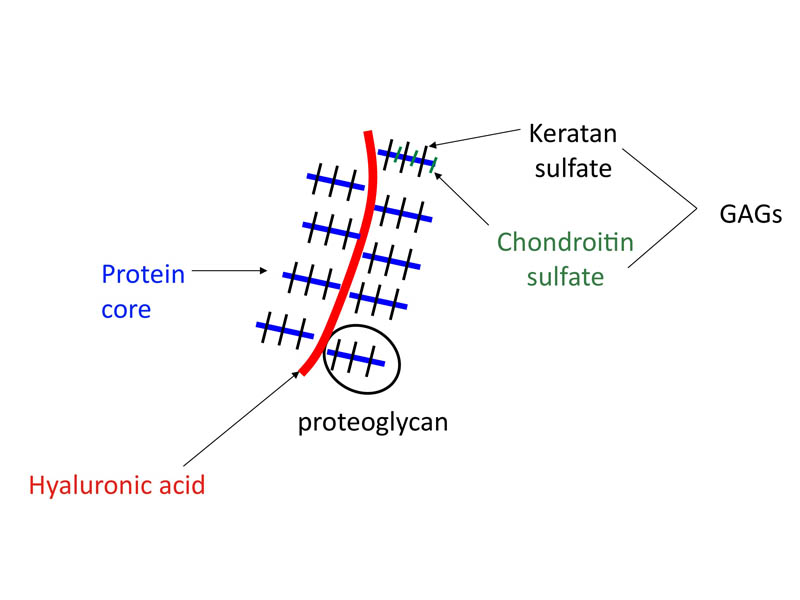Interdisciplinary Note (8 of 15)
Do not confuse glycoproteins with proteoglycans. Glycoproteins are proteins that contain oligosaccharide chains covalently attached to amino acid side-chains. While proteoglycans, on the other hand, do have a protein core, proteoglycans consist of about 95% polysaccharide (glycosaminoglycans). Proteoglycans serve as the ground substance (extracellular medium) of many types of connective tissue.
The carbohydrate portions of proteoglycans are composed of polymers of various acidic derivatives of glucosamine (glycosaminoglycans) including chondroitin sulfate, heparan sulfate, and keratan sulfate. Because the pKa's of the carboxyl and sulfate groups of these sugars is lower than physiological pH, they will be negatively charged under physiological conditions. These charge characteristics are responsible for the viscoelastic and lubricating properties of proteoglycans. Proteoglycans repel each other. They slide over each other. Proteoglycans are also extremely hydrophilic. Proteoglycans form a hydrated gel that cushions joints.
